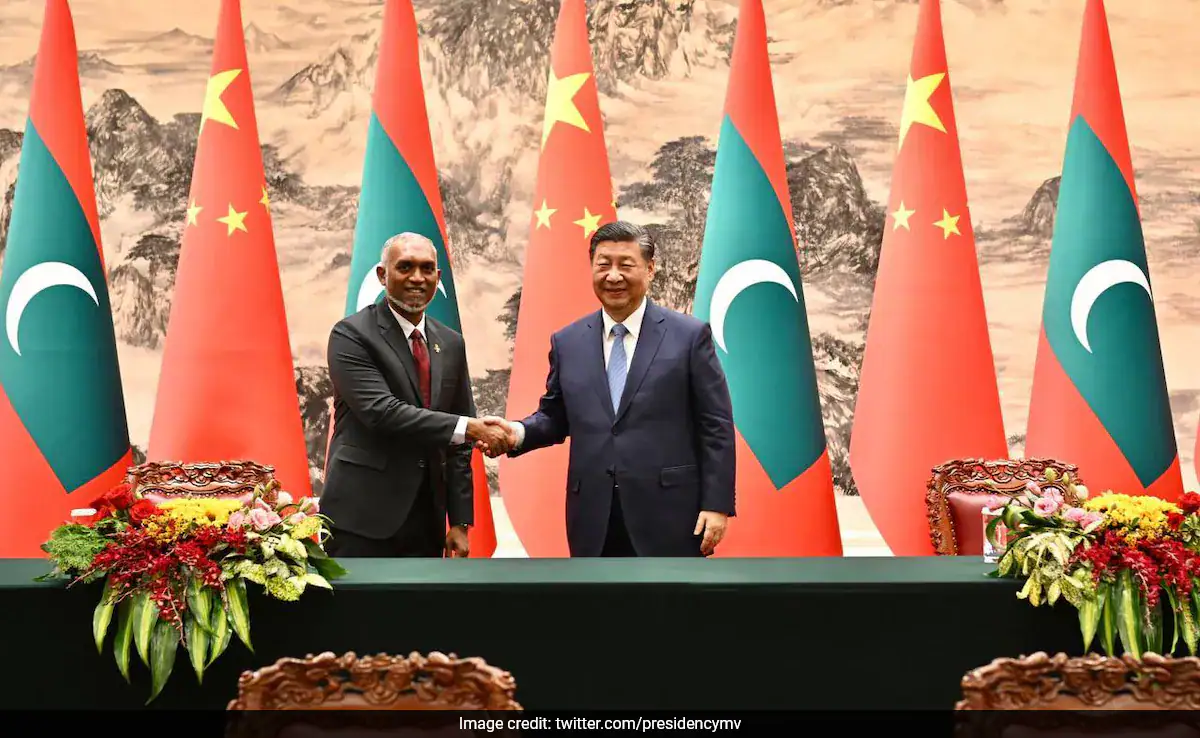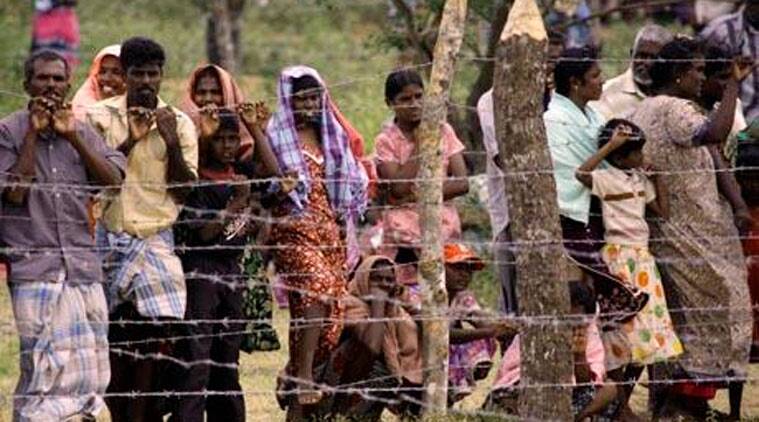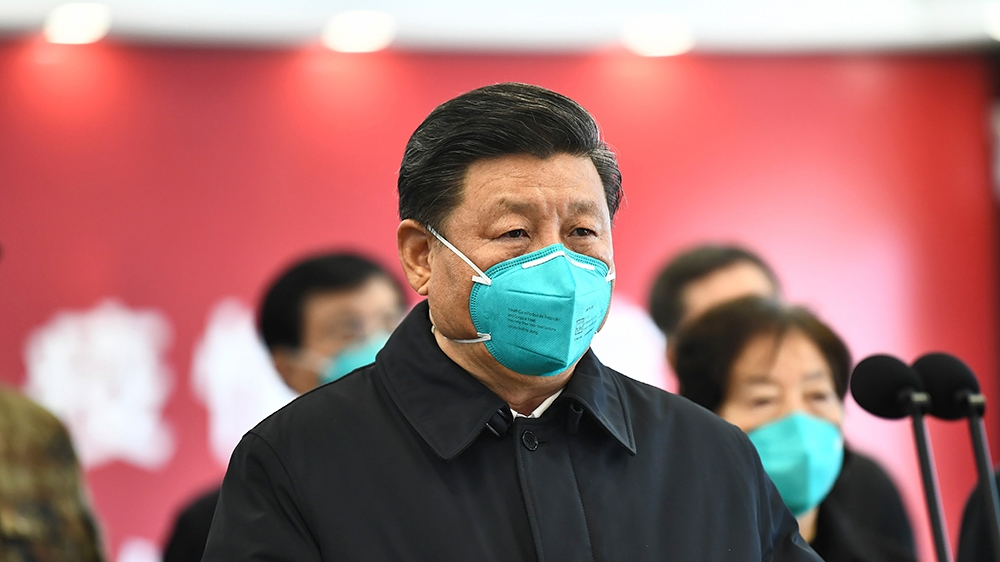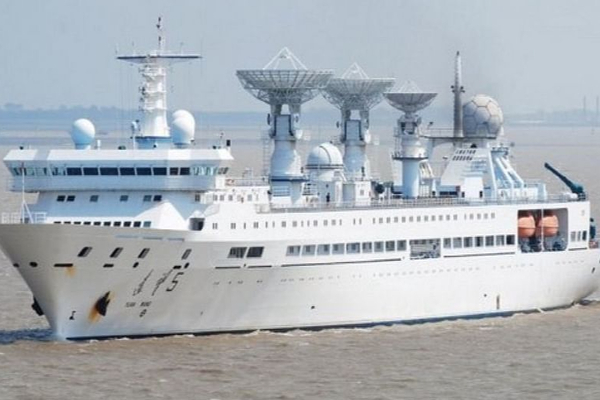The Maldives, a small country, was once well-known mainly for its pristine beaches and luxury resorts. However, it has now become a symbol of Sino-Indian strategic rivalry in the Indian Ocean region. Viewed against this background, “the Maldives is shaping up to be the regional test case,” but it is also a vivid example of what will happen when China’s interference grows in smaller countries. ‘India Out’ actions in the Maldives have intensified since pro-China Mohamed Muizzu seized power in September 2023.
The culmination of this is that Muizzu made his first official visit to China. It is contrary to the foreign policy tradition followed by India’s neighboring countries. Amid the tensions, three Maldivian ministers made derogatory posts against India. They purposely spread insulting words against Prime Minister Narendra Modi. Through this, the tensions with India were systematically intensified before Muizzu traveled to China.
During the visit, the two heads of state announced the elevation of the Comprehensive Strategic Cooperative Partnership (2024-2028) and documents on cooperation in such areas as Belt and Road cooperation, economic and technical cooperation, the blue economy, the digital economy, green development, infrastructure construction, and assistance for people’s livelihoods.
Chinese President Xi Jinping said that “under the new circumstances, China-Maldives relations face a historic opportunity to build on past achievements and forge ahead.” China stands ready to exchange governance experience with the Maldives, strengthen the synergy of development strategies, advance high-quality Belt and Road cooperation, and set a new benchmark for the China-Maldives friendship, he added.
It thereby revealed that Muzziu’s administration is keen to implement its “India Out” policy, as he had proclaimed during the election campaign. His minister expressed anti-Indian sentiment in such a way that he traveled to China with this message. After finishing his five-day official trip, Muzziu immediately announced that India must withdraw its troops by March. It is another example of how he projected himself and how stern he was about his anti-Indian mission.
In 1998, India helped thwart a coup d’état attempt by a Sri Lankan-based militant organization called the People’s Liberation Organization of Tamil Eelam (PLOT), organized by a Maldives businessman. It was described at the time as a model for the benign security role that India could play in the Indian Ocean. Then US President Reagan expressed his appreciation for India’s action, calling it a valuable contribution to regional stability. If India had not intervened on time, the Maldives would have fallen under the control of a small rebel group that with only 80-odd cadres controlled the capital Male for 14 hours. Now this country has given a deadline to India to withdraw its small complement of troops from the archipelago!
India has been the sole security provider for the Maldives since it was born as an independent country. However, since 2010, the pro-China club has emerged in Maldivian politics, and they are trying to project that India does not have to be the sole security provider. It is on this basis that the Muzziu pressed Indian troops to leave. There are only 75–80 troops stationed on some islands.
About 150 Indian troops were stationed in the Maldives for a year after the coup in 1998. No one in the Maldives was arguing to expel the Indian troops at the time. Against this backdrop, 75–80 Indian military personnel in the Maldives should not have been an issue, although the Muzziu-led political elite is using it as a vindication of their anti-India project.
There was no crisis in India-Maldives bilateral relations until the pro-China Abdulla Yameen came to power in 2013. Ever since China’s One Road, One Belt initiative was launched, the Maldives has fallen under the dragon’s shadow. There are many similarities between Sri Lanka and the Maldives in how China uses the economic vulnerability and political instability of small countries to bring them into its sphere of influence. Taking advantage of Sri Lanka’s internal turmoil, Beijing exploited the weaknesses of the Rajapaksa family-run administration.
The Maldives case is a vivid example that Beijing is not going to stop its power play in India’s neighboring countries. China’s aim is crystal clear: to question India’s bid for regional leadership. China’s main strategy is to weaken India’s influence over its neighbors. China is moving to achieve this in two ways – one is to bring a pro-China political elite to power; and two, to protect such groups as an indispensable force in the decision-making process, even if they cannot stay in power.
China used this same strategy to expand its foothold in Sri Lanka during Mahinda Rajapaksa’s period. It is important to note that China’s strategy is paying off.
In the last two decades, China’s entry has created a situation in India’s South Asian neighbors where they either opt for India or China, or both. China’s approach has been successful to some extent. Twenty years ago, India’s neighbors, except for Pakistan, could not think strategically outside of India. Thinking in that way was the equivalent of walking under the knife. However, now the situation has changed drastically.
A pro-China political elite has taken root in most South Asian nations. India’s neighbors are trying to enjoy an “open” geopolitical relationship status with the two Asian giants, not necessarily one at the expense of the other.
How is India going to tackle this challenge? Can India’s soft-power approaches deter China’s hard-power moves? New Delhi needs to develop a special resilience to face Beijing’s mounting challenges in the region which it once considered its backyard.
India must pay attention to establishing a single-country mission on China, as the US (CIA) is doing. In 2021, the CIA set up a new mission center focused exclusively on China. In the words of CIA head William Burns, “It is the only single-country mission center; it provides a central mechanism for coordinating work on China.”
The ‘Dragon’s Shadow’ in South Asia is growing because the challenges against India manipulated by China may go beyond its calculations.




